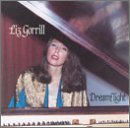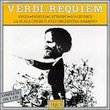| All Artists: Liz Gorrill Title: Dreamflight Members Wishing: 0 Total Copies: 0 Label: The Orchard Original Release Date: 1/1/2000 Re-Release Date: 8/22/2000 Genres: Jazz, Pop Styles: Modern Postbebop, Bebop Number of Discs: 1 SwapaCD Credits: 1 UPCs: 669910690727, 788107101027 |
Search - Liz Gorrill :: Dreamflight
 | Liz Gorrill Dreamflight Genres: Jazz, Pop
|
Larger Image |
CD DetailsSimilar CDs |
CD ReviewsFasten your seatbelt...An amazing jazz recital John Grabowski | USA | 06/28/2003 (5 out of 5 stars) "I thought I already knew this CD.I've had it for several years, and listened to it a number of times. I have to confess, though, that I rarely listened to it straight through. Often after five or so tracks I have to stop, not because I don't like it (far from it) but because Liz packs so much in her music that she leaves my head spinning. And this is from someone who finds The Second Viennese School delightful early morning music!But to write something intelligent for this review I decided to play the whole thing. After all, I'd just made it through comparative listenings of the Mahler 2nd symphony (Walter vs. Rattle) so I was ready for anything!I'm glad I did. Listen to the whole thing twice, that is. I heard relationships *among* the pieces that I'd not noticed before. I'd listened to the relationships within the works before, but for the first time I appreciated the *program* that Liz played for her audience at New York's Greenwich House. There is a progression of moods, of ideas, that start with the playful and wild (but very structured) rendition of "You'd Be So Nice To Come Home To" and build with darker intensity on such pieces as "Pulsation," "Thrill Me" and "Deep Awakening." One moment sticks with me that consistently makes the hair on my neck stand up: the insistent repeated chords in "You'd Be So Nice" (starting at 03:52 on the CD) which send me into ecstacies, come back in a more ominous form on "Pulsation" at thirty seconds in. Maybe it's just a relationship I'm hearing that she didn't even intend. Only Liz knows. "A Differet Shade of Melancholy" is just that, a very different way of handling the blues, Liz getting funky (okay, funky-ish). "We'll Remember May" is very directly emotional, and as it's dedicated to Connie Crothers and Lenny Popkin, two friends of hers, I can only imagine what the "inner" program is. Parts of it remind me of Rachmaninoff's Prelude in B minor Op. 32, believe it or not. "Chord Storm" shows us how many different ways you can play the "same" chords. Those chords explode thunderously in "Blues From A Subterranean Galaxy." It seems that various elements set out early in the program as light and sunny or tentative grow like mighty redwoods into majestic, craggy structures. And again, starting at 6:50 in "Subterranean," those insistent chords from "You'd Be So Nice" and "Pulsation," morphing into something new again. And just when you think you have her pegged as a "muscular" pianist with little interest in single note lines, she turns around with something like "Dream Flight." (As well as with much of her amazing "For The Beauty of the Earth" CD, but that's for another review.)This wordy review just hints at what's inside this CD, however. Liz's playing is so *dense* that it's impossible to put into words, the way Elliott Carter, Lennie Tristano (her teacher), and the Berg Violin Concerto all fail to be summed up with words. That's the frustration of writing a review--yet this is the very sort of music that most appeals to me to review. Liz doesn't play "songs." She plays the piano, in all its colors, growls and roars. This music isn't for someone who seeks what's already familiar-with Liz you never know where she's going to take you, or even if you'll like it when you get there. And, in my opinion, her playing is closer to modern "classical" music than it is to "jazz." If you dig Webern, Messiaen, Prokofiev, Tristano and "cats" like that, you're going to love this CD."
|

 Track Listings (10) - Disc #1
Track Listings (10) - Disc #1